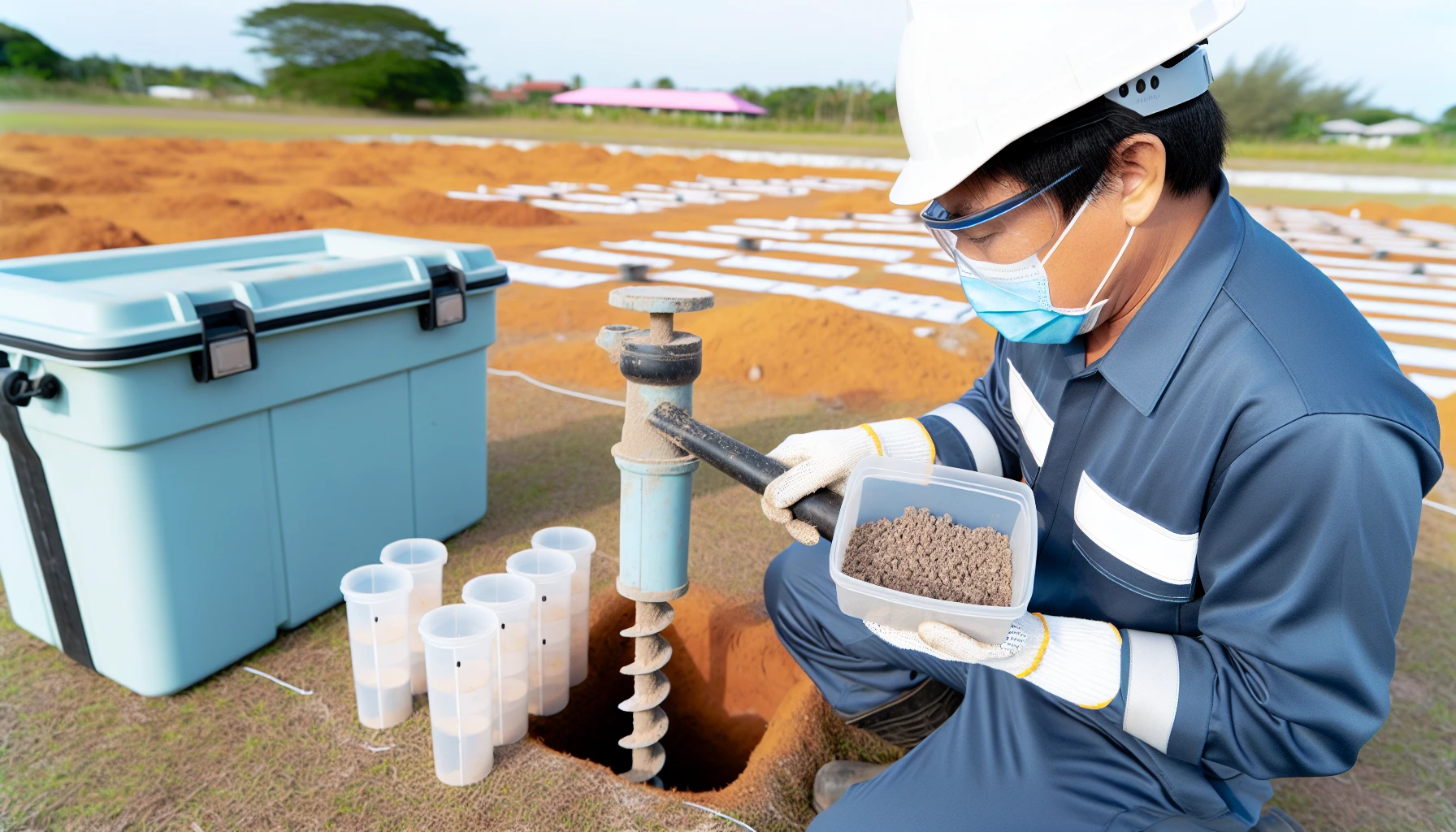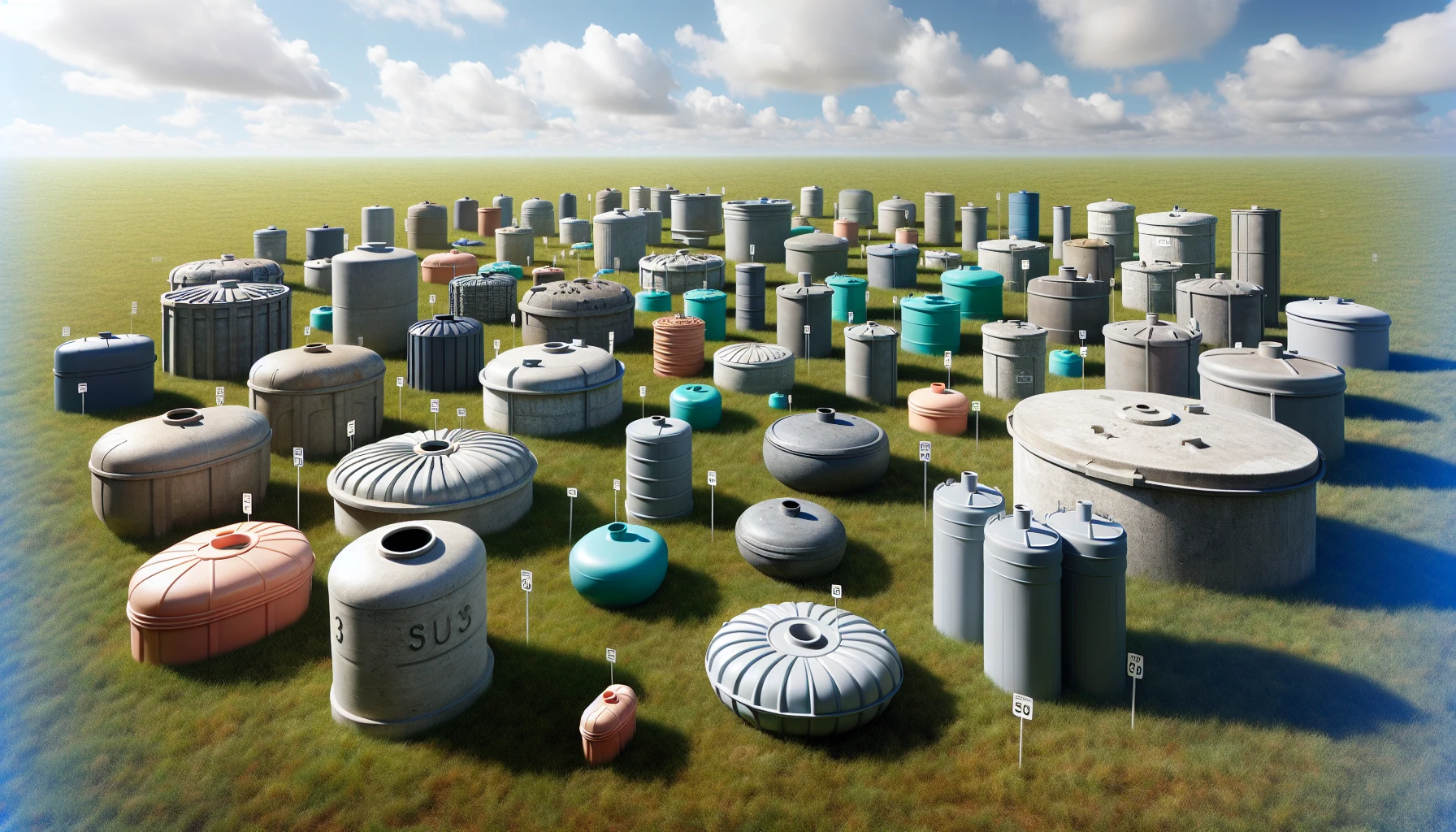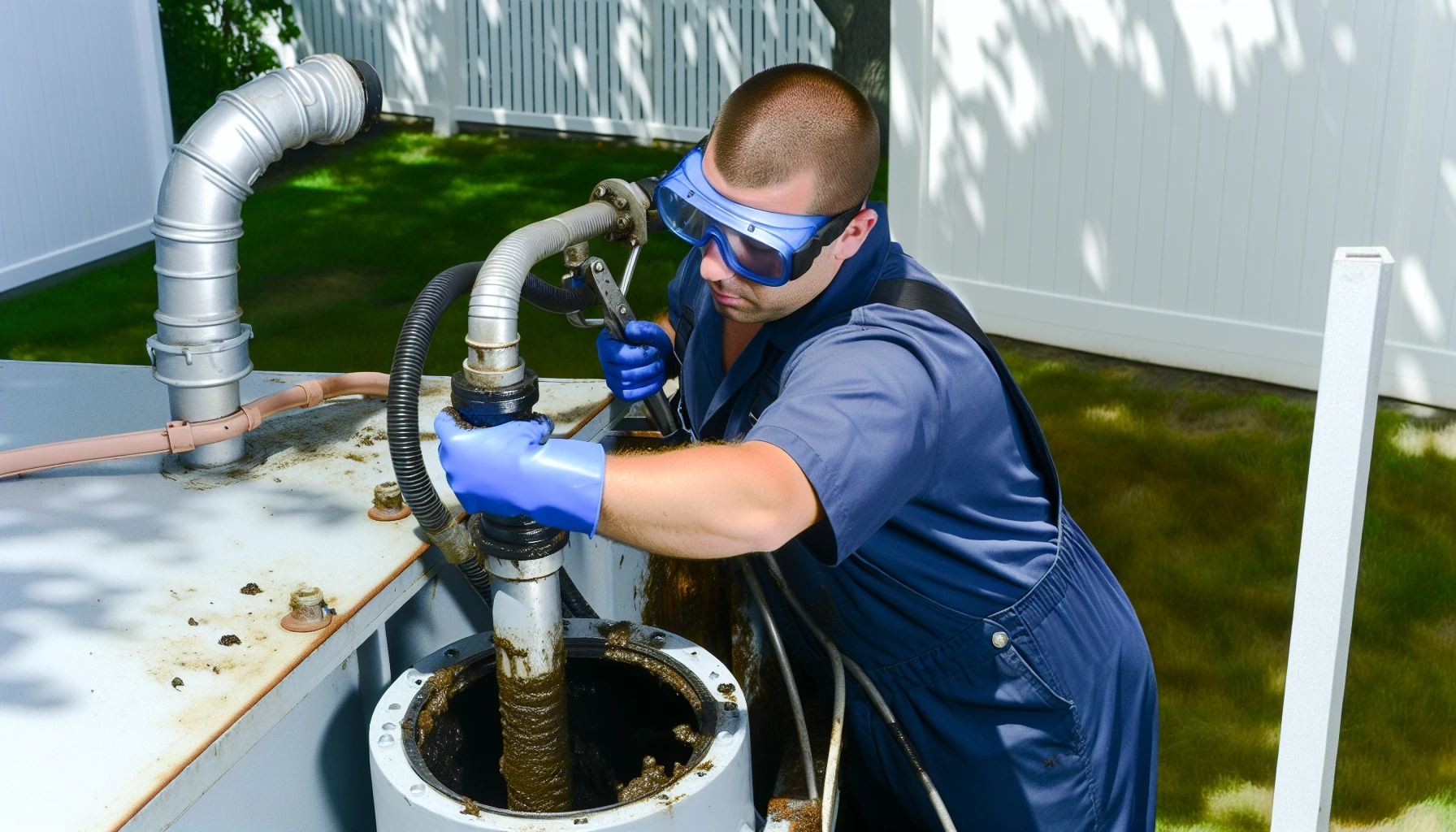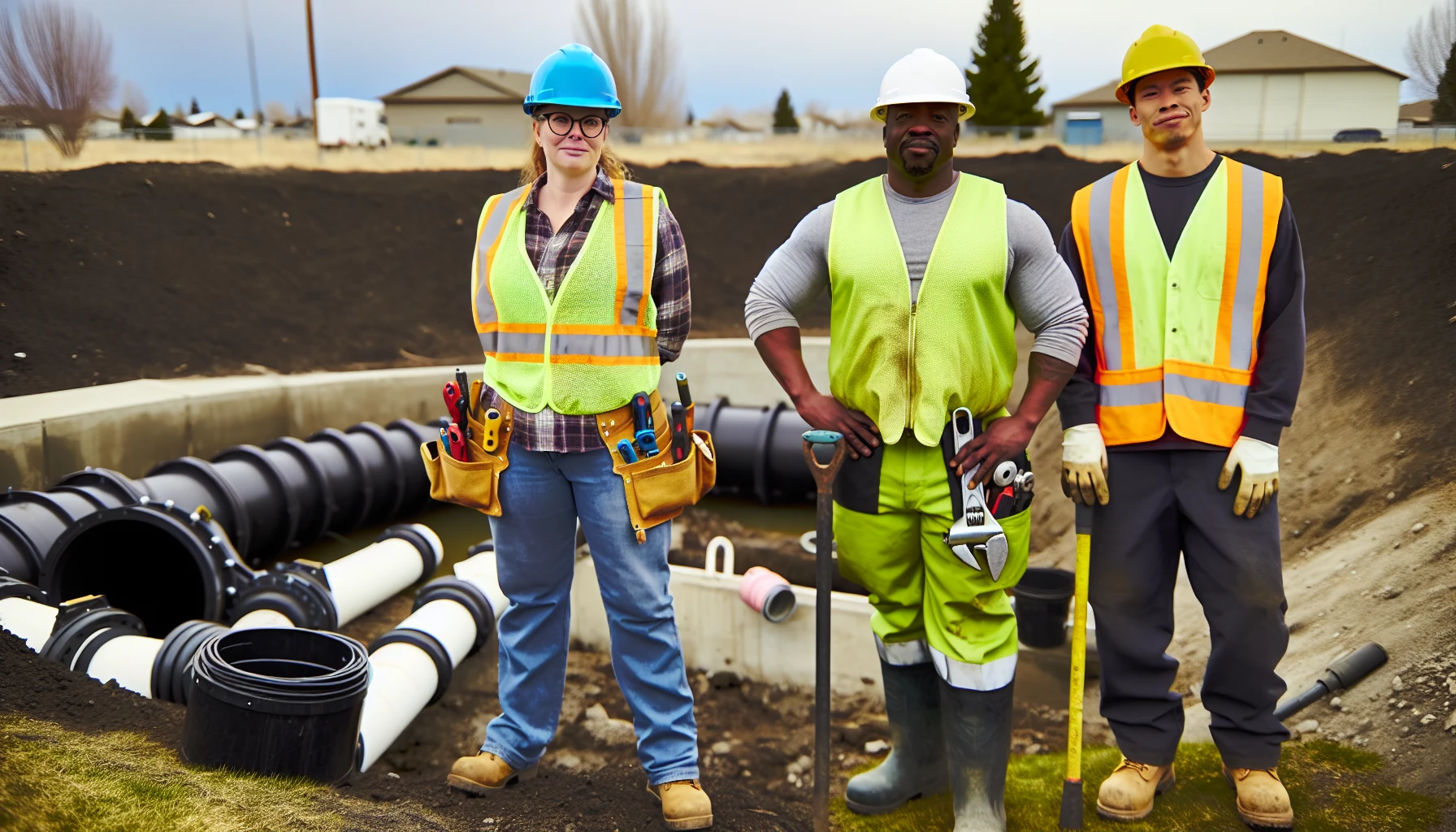Efficient Septic System Installation: Your Step-by-Step Expert Guide
If you’re looking into installing a new septic system for your property, it’s an investment worth considering. By taking the time to plan and enlisting help from professionals in wastewater management, you can achieve a functional setup that will last long-term. In this blog post, we’ll guide readers through all of the essential elements associated with installing a new septic system—from choosing which one works best and being aware of the costs involved to keeping up regular maintenance so as to ensure optimal performance.
Key Takeaways
-
Understand the installation process of a septic system and select the right tank based on factors such as size, material, number of bedrooms/bathrooms, and soil type.
-
Secure necessary permits & properly prepare site for successful installation. Consider cost factors like labor costs & additional expenses when budgeting.
-
Regular maintenance is essential to ensure optimal performance, longevity & compliance with local regulations.
Understanding Septic Tank Installation

For any property that is not attached to a public sewer system, the installation of a septic tank is essential. This system will process and treat wastewater from your home while also ensuring the safety and hygiene in an area for you and your family. Understanding how this works is necessary if it has to function properly within its given regulations.
In general, there are two classifications of such systems: gravity-fed/traditional ones as well as alternative set-ups like ATUs (Aerobic Treatment Units) or Aerobic Septic Systems which must be selected according to dimensions of land, number of bedrooms in one’s house, type of soil found on their site etc.
Choosing the Right Septic Tank System
When selecting the correct septic tank system for your property, it is important to take into account a number of different factors such as type and size. Common septic tank systems available include gravity-fed, chamber-style tanks constructed from concrete or plastic (polyethylene), fiberglass tanks and other alternatives like mounds or sand filters.
The dimensions of the septic tank should be determined based on certain criteria related to your home including how many bedrooms/bathrooms are in use, needs specified by the land owner, plus soil characteristics which influence drainage abilities, differences between each kind must be acknowledged here.
It might prove prudent then to speak with an expert while carrying out tests on any present soil before making definitive decisions concerning installation plans for one’s own particular style of septic system within that residence’s property line.
Securing Permits and Preparing the Site

Prior to installing the septic system, it is essential for you to obtain necessary authorization from your local health department or regulatory agency since requirements can vary by region. Planning and preparing the site in advance are also important steps that involve marking utility lines, testing soil samples and making sure conditions onsite are safe during installation.
Before beginning any work, ensure all permits have been obtained appropriately so as to prevent potential problems before they arise. Preparing effectively includes excavating where both tank and drain field will be installed correctly according to regulations while following secure practices accordingly prior setting up of a functional septic system setup successfully.
These preparations establish an effective foundation for finally accomplishing a suitable functioningseptic system being installed.
The Installation Process
Once the correct permits have been obtained and the site has been prepared, it is time to begin installing a septic system. This includes excavating an area in order for placement of the tank as well as connecting up its associated plumbing pipes. The drain or leach field must then be installed, although this step may vary depending on if one opts for alternative systems such as aerobic treatment units or mound based ones instead. Finally, backfilling around all areas is crucial so that both performance and stability are maximised while also ensuring compliance with local regulations when using your brand new septic setup!
Key Factors Influencing Septic Tank Installation Cost

The price of septic tank installation depends on various factors. It is important to be aware of them in order to create an appropriate budget and make the right choice for your property when picking a septic system. Major elements that can affect the cost include:
-
The size of the tank needed
-
Materials used during process
-
Labor fees connected with its assembly
-
Other related costs such as permits or soil testing .
Keep in mind that these prices may vary depending on where you live, type of chosen system (e.g., mound systems or aerobic treatment units). All kinds will bring different expenses unlike conventional types which are relatively cheaper than others mentioned above.
Tank Size and Material
The price tag associated with installing a new septic tank depends largely on its size and type of material used. Septic tanks can be built out of concrete, plastic or fiberglass - all having distinct advantages and disadvantages to weigh when making the selection. For best results in regards to budgeting for installation costs, home owners must first evaluate how many bedrooms their abode contains as well as any other particular needs they may have before settling on an appropriate-sized tank. Speaking, bigger septic tanks tend to require more materials plus labor, which means paying more money. While purchasing a smaller model could potentially save you some cash.
Labor and Additional Costs
When deciding on a septic system to install, it’s important to factor in all costs associated with the installation. This includes not only the tank itself, but also labor and other additional expenses such as permits, which can range from $300-$500 for example. Depending on what type of septic system is being installed, soil tests may need to be done at an extra cost that varies based upon location and complexity of set up. Knowing these different fees ahead of time allows you to ensure whatever choice best suits your needs will fit into your budget before committing too much money or resources upfront.
Regular Maintenance of Your New Septic System
Once it is set up, periodic upkeep of your septic system needs to be done in order for it to function properly and last a long time. Regular maintenance not only prevents possible problems such as blockages or malfunctioning, but also guarantees the smooth operation of the system that meets local laws.
Neglecting regular servicing can result in expensive fixes or require an entire replacement of your equipment. To steer clear of these issues, ensure normal pumping, checking-ups and resolving common errors associated with this setup are all included within a suitable routine plan.
The Importance of Pumping and Inspections

Proper maintenance of your own septic tank is essential for its successful performance, and regular pumping with periodic inspections are necessary to achieve this. These services enable us to prevent a range of issues such as sludge accumulation or overflow, blockage caused by physical damage or clogging up integral parts which could lead to diminished storage capacity in the tank thus increasing chances of sewage backups and potential system failure. Speaking these operations should be conducted every 2-5 years based on usage – doing so will prolong the lifespan and maintain its usability while saving money over time!
Troubleshooting Common Septic Issues
It is important to understand and address any frequent septic system issues. Sewage backup, slow drainage or foul odours may indicate a problem that needs repair. Calling a professional technician for troubleshooting and fixing such problems should be done without delay. In order to make sure the system works optimally in the long-term, regular maintenance of your septic tank along with pumping and inspections are essential steps towards preventing Potential damages from occurring.
Wastewater Solutions' Expertise in Septic System Installation

Wastewater Solutions is the premier septic system service provider in Edmonton and its environs. With two-and-a-half decades of experience, our team can provide you with topnotch services tailored to your specific needs.
Whether it’s a new installation or maintenance & repairs that are required for existing systems. Wastewater Solutions have the knowhow to guarantee smooth operations every time they’re called upon. Customer satisfaction matters most to us as well as high quality parts being used along with correct tools, making us highly recommended among those requiring assistance on their sewage lines!
Our Service Areas
At Wastewater Solutions, we offer reliable septic system service to a wide range of locations around Edmonton, such as Parkland County, Brazeau County and more. Our skilled technicians provide exceptional assistance for residential, commercial and industrial properties along with agriculture related sites, no matter where they may be located in our service area.
We are here to help you manage any wastewater issues quickly so that your day-to-day life won’t be interrupted or hindered by the problem at hand! Trust us when it comes to delivering high quality solutions pertaining to all matters regarding your particular septic systems needs.
Why Choose Us
At Wastewater Solutions, we strive to deliver an efficient and affordable septic system installation. Our technicians are trained to use only the best parts as well as proper tools for each job so that your newly installed system operates at maximum efficiency. Our team will provide extensive assistance throughout the entire process – from initial consultation through post-installation maintenance and repairs. We guarantee full customer satisfaction with all of our installations services due in part to attention given even down to the smallest details during every single project performed by us here at Wastewater Solutions. When it comes time for you to look into a new septic system or require professional service then choose no one else than be sure meet any requirements needed here!
Additional Services to Complement Your Septic System
At Wastewater Solutions, we provide a comprehensive range of septic system installation services that are designed to address all your water and waste management needs. To this service, our technicians also offer cistern repair and new installations as well other plumbing services as full-service plumbing solutions for the property owner’s convenience. We will help guide you through Alberta/Canada regulations concerning rural systems so everything is compliant with local rules.
All these combined services mean that homeowners only need one stop for their complete sewage system requirements - something which ensures safety, sanitation levels as expected in compliance with government guidelines at all times!
Cistern Installation and Repair
When it comes to installing and repairing cisterns, our services are top-notch. A reliable water supply is essential for any property, especially when complemented by a septic system – this is where we come in! Our team can provide the necessary assistance on choosing the right solution for your needs as well as aid with installation and maintenance of your systems.
Our professional experts guarantee that you will have peace of mind knowing that every process from installation onwards to repairs will be done efficiently according to high standards required. To these services mentioned above, we also offer general repair options whenever they’re needed, making sure everything stays in perfect condition.
So trust us today. Here at [COMPANY NAME], all aspects related to how a cistern should run optimally are taken care of quickly without hassle or worry, giving customers maximum satisfaction each time!
Full-Service Plumbing Solutions
Our comprehensive plumbing services ensure that your residence or business operates effectively and efficiently, attending to every requirement of water and waste management. Our team is prepared for all sorts of projects from regular maintenance to more intricate installations, providing a wide range of solutions involving septic systems as well as other elements in the field. We provide:
-
System repairs plus upkeep related with septic tank;
-
Cleaning out drains together with unblocking them;
-
Pipe repair & replacement work ;
-
Toilet maintenance too , installation when it comes to water heaters;
Fixture mending together with detection also fixing up leaking issues.
Thanks to our competence, you can count on having an optimal condition in terms of handling wastewater along with required equipment whenever any problem arises.
Regulations in Alberta surrounding rural septic systems design and installation
Adhering to the regulations concerning septic systems design and installation in Alberta is paramount for compliance and avoiding any applicable penalties. These mandates encompass performance objectives, as well as standards governing both their designs and installations with specific material specs required also by size criteria.
To ensure such standards are upheld during a system’s whole construction process, Wastewater Solutions follows all of these requirements – those set out under the Private Sewage System Standards, including site evaluation variables if needed, while being able to secure variances so prescribed conditions can be met accordingly.
Regulations in Canada surrounding rural septic systems design and installation
It is essential to be informed of the Canadian regulations surrounding rural septic system design and installation. Following these rules ensures that tanks, fields and any related systems are built in accordance with all applicable territorial, provincial or municipal codes as well as local guidelines.
It’s important to check-in with your relevant health department or regulatory body for compliance before starting the process of setting up a new sewage unit. By being knowledgeable about such laws and enlisting an experienced installer like Wastewater Solutions you can guarantee a smooth procedure from beginning to end.
Top 10 tips to sourcing a septic system and getting a quote for installation in Alberta
When installing a septic system in Alberta, start by researching the different types of systems available and selecting an appropriate tank size and material based on your property’s individual needs. It is also advisable to consult with a professional installer like Wastewater Solutions for expert advice as well as compare quotes from multiple installation companies that include breakdowns of all related costs such as permits, labor, inspections, etc. Familiarize yourself with Canadian regulations when it comes to rural septic design and consider additional plumbing services or repair if necessary. Verifying the chosen company has experience & equipment before going ahead. Finally, make sure post-installation support & maintenance are offered alongside regular pumping & inspection to ensure optimal performance over time.
Summary
When it comes to installing a septic system, proper planning and expert advice are essential. To maximize the benefits of your investment in wastewater management needs, you should consider tank size and material used for installation before obtaining necessary permits. Wastewater Solutions provides top-notch services that include both system setup as well as ongoing maintenance across Edmonton and its neighboring areas – guaranteeing customer satisfaction each step along the way! With our dedicated team’s expertise in all things related to septic systems, you can trust us with your project from start to finish.
Frequently Asked Questions
How much is a septic system?
The amount you may pay for a fresh septic tank system varies from $1,500 to $5,000 based on the kind of new or conventional septic system and size of your residence.
What factors should I consider when choosing a septic system for my property?
When deciding on a septic system, various factors should be considered such as tank type and size, material selection for the system, particular requirements of your property’s layout and any local regulations that may apply.
How often should I have my septic tank pumped and inspected?
It is suggested to have the septic tank pumped and evaluated on a two-to-five year basis, depending on how often it’s used. Pumping and inspection of the tank should not be neglected as regular maintenance is necessary.
What are some common septic system issues, and how can I troubleshoot them?
It is recommended to have a professional septic technician inspect your system if you are experiencing issues such as slow drainage, bad odors or sewage backing up. Troubleshooting these common problems with the aid of an expert can help ensure proper functioning of the septic system.
What additional services complement a septic system installation?
Additional services to complement a septic system installation include cistern installation and repair, plumbing solutions, and guidance on regulations for rural septic systems.
Not finding what you are looking for? Wastewater Solutions also offers the following services:
Septic System Repairs
Freshwater Cisterns
Site Evaluations and Septic System Design
comments powered by Disqus